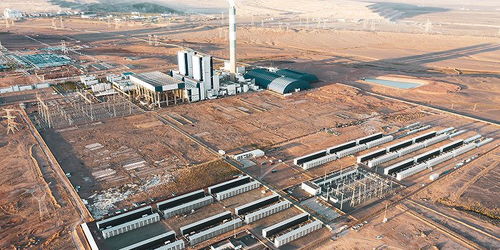The relentless hum of cooling fans, the blink of status lights, the silent promise of digital gold – this is the symphony of a mining hosting facility. As we hurtle towards 2025, the performance analysis of these providers becomes less of a suggestion and more of a critical necessity. Forget dabbling; we’re talking about serious hash rate, optimized uptime, and ultimately, profitability in the volatile world of cryptocurrency mining. The stakes are high, the competition is fierce, and choosing the right hosting partner can make or break your mining operation.
Bitcoin, the OG cryptocurrency, still reigns supreme, demanding powerful ASICs and, consequently, significant electricity consumption. Mining profitability, particularly for BTC, hinges on minimizing operational costs, and electricity is a major culprit. This is where hosting providers shine – or stumble. They offer economies of scale, negotiating lower energy rates, optimizing cooling systems, and ensuring consistent network connectivity. But not all providers are created equal. Some promise the moon and deliver only dust.
Beyond Bitcoin, Ethereum, even with its transition to Proof-of-Stake (PoS) on the main chain, hasn’t entirely disappeared from the GPU mining landscape. Some Ethereum forks and alternative chains still offer opportunities for GPU miners, albeit with lower overall profitability compared to the heyday of ETH mining. Then there are the memecoins like Dogecoin, often mined using auxiliary proof-of-work schemes alongside other cryptocurrencies. While the profitability of mining these coins is highly speculative, they can contribute to overall revenue when strategically utilized alongside more established cryptocurrencies. This dynamic environment necessitates a hosting provider that can adapt to changing market conditions and support a diverse range of mining hardware and algorithms.
Analyzing the performance of mining hosting providers requires a multi-faceted approach. It’s not just about the headline price per kilowatt-hour (kWh). We need to delve deeper, examining factors such as uptime guarantees, cooling efficiency, network latency, security measures, and customer support responsiveness. A seemingly cheap kWh rate can quickly become expensive if the hosting facility experiences frequent downtime or struggles with overheating, leading to hardware failures and lost mining revenue.
Uptime is paramount. A hosting provider with a 99.99% uptime guarantee sounds impressive, but what are the consequences of failing to meet that guarantee? Do they offer service level agreements (SLAs) with clear compensation for downtime? Dig into the fine print. Similarly, cooling efficiency is crucial for maintaining optimal hardware performance and extending the lifespan of your mining rigs. Overheating can significantly reduce hash rates and even damage sensitive electronic components.
Network latency, often overlooked, can also impact mining profitability, especially for pool mining. High latency can lead to stale shares, reducing your chances of earning rewards. Choose a hosting provider with robust network infrastructure and low latency connections to major mining pools. Furthermore, security is non-negotiable. Mining facilities are prime targets for cyberattacks and physical theft. Evaluate the provider’s security measures, including physical access controls, surveillance systems, and cybersecurity protocols.
Consider the geographic location of the hosting facility. Climate can play a significant role in cooling costs. Facilities in colder climates generally require less energy for cooling, potentially leading to lower overall operational expenses. However, remote locations may present logistical challenges for hardware maintenance and repairs.

Beyond the technical aspects, customer support is equally important. When problems arise – and they inevitably will – you need a responsive and knowledgeable support team that can quickly diagnose and resolve issues. Test their responsiveness before committing to a long-term contract. Send them a few test questions and see how quickly they respond and how helpful their answers are.
Looking ahead to 2025, we can expect to see further consolidation in the mining hosting industry. Competition will intensify, driving providers to offer more competitive pricing and enhanced services. We can also anticipate increased adoption of renewable energy sources to power mining facilities, reducing the environmental impact of cryptocurrency mining. Sustainable mining practices will become increasingly important as institutional investors and environmentally conscious consumers demand greater transparency and accountability.
Benchmarking mining hosting providers for 2025 requires a thorough assessment of their technical capabilities, operational efficiency, security measures, and customer support. Don’t be swayed by flashy marketing campaigns or overly optimistic promises. Do your due diligence, research thoroughly, and choose a hosting partner that aligns with your specific mining goals and risk tolerance. The future of your mining operation depends on it.
Finally, remember that the cryptocurrency market is inherently volatile. Mining profitability can fluctuate significantly based on factors such as cryptocurrency prices, network difficulty, and energy costs. Choose a hosting provider that offers flexible contract terms and allows you to adjust your mining capacity as needed to adapt to changing market conditions. A long-term contract with a rigid commitment can quickly become a liability if market conditions turn unfavorable.


Leave a Reply to midNIGHTowl Cancel reply